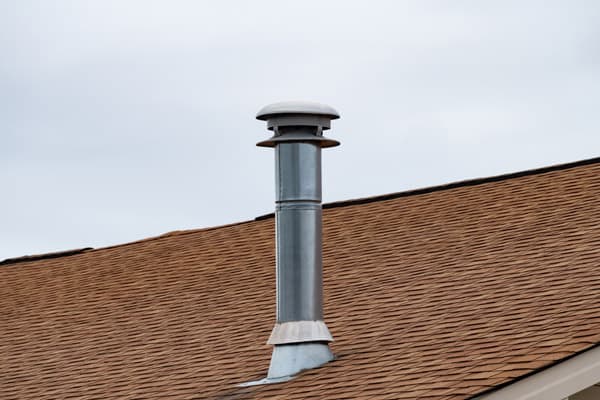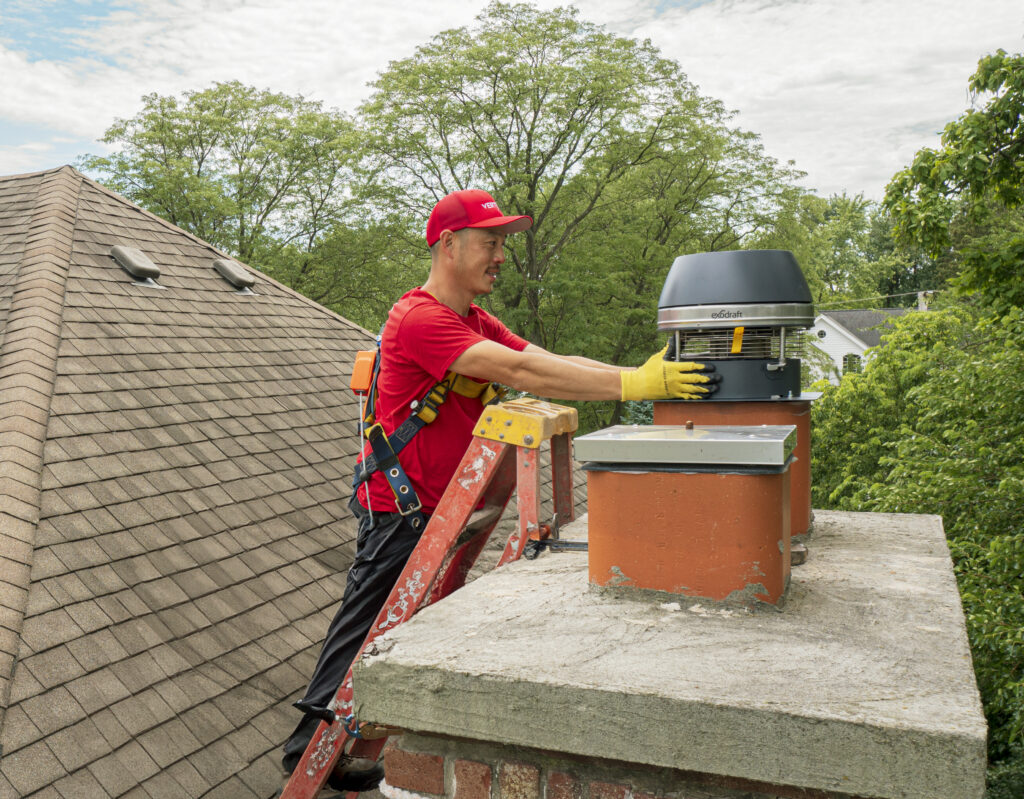
Chimney liners or flues are used to transport the combustion byproducts of fires outside the house safely. However, damaged chimney liner flue tiles let dangerous gases (smoke), heat, and fire escape into the chimney's outer structure, posing a risk to your health and your house.
Whether your chimney exhausts air from a fireplace, wood stove, or furnace, it almost certainly has a section of clay flue tiles connected to make the chimney lining.
Outside air can also enter the flue through cracks and gaps in the seams of flue tiles. As a result, the chimney's draught is slowed, and the smoke is cooled, accelerating the creosote buildup and resulting in a weak draught that could allow smoke into the house. The major cause of chimney fires is creosote buildup in the flue.
Do you possess a malfunctioning chimney flue? You'll find all the information you want to fix in this post. We'll start by discussing the potential reasons for chimney flue problems.
We will next provide you with some typical symptoms before presenting straightforward methods for fixing your issue. So let's start.

Reasons for Chimney Flue Damage
Here are two reasons through which a chimney liner may be harmed. The harm caused by an event as well as weather-related damage over time.
Over time, water can weaken chimney mortar, causing it to erode or crumble. Your chimney's creosote and moisture mixture is corrosive, which quickens the degradation rate. The mortar between the flue tiles typically sustains the most damage from the elements in a chimney. Flue tile joint mortar that has crumbled leaves spaces for heat and combustion byproducts to escape. This is only one of the reasons your chimney has to be waterproofed. Although it can, a leaking chimney can result in fire code violations.
The hazardous events that harm chimney liners can take many different shapes. Flue tiles can be broken by the storm, such as in heavy snow or rain, when a tree falls on a chimney, although chimney fires are the most prevalent cause of damage. Chimney fires and thermal stress cause flue tile cracking.
Clay flue tiles are intended to retain combustion byproducts rather than flames. Unfortunately, flue tiles attempt to expand beyond their capacity due to the high temperature of a chimney fire, which leads to cracking. If your house survives, you'll need to inspect your chimney before lighting the next fire. To lower the risk of chimney fires, it is crucial to have your chimney cleaned and inspected yearly.
Signs That a Chimney Flue Needs Fixing
Most homeowners take their chimneys for granted unless something goes wrong with them. Many individuals are unaware that particular symptoms might help them understand when their chimney flue needs to be fixed and may only become aware after they begin to have issues.
Cracks in the brickwork, missing or broken flue tiles, and soot accumulation on the chimney are some of the clearest indications that your flue needs to be repaired. It is crucial to contact a specialist as soon as you become aware of any of these red flags so they can diagnose and address the issue as soon as possible.
Ignoring the problem now could result in more serious issues that will cost more later.

Methods to Fix a Cracked Chimney Flue
Depending on how many tiles are damaged and where the cracks are, there are a few different ways to fix them. However, any chimney flue restoration must be performed by a skilled specialist, regardless of the technique.
Repairing a Single Cracked Flue Tile
The best remedy is to eliminate and replace the tile if just one broken flue tile that can be accessed from the top of the chimney. First, using a hammer, the old tile can be shattered into bits. Then, when a tile cracks, the pieces can be manually pulled out and removed after being back-buttered with chimney cement or mortar, and a fresh flue tile is dropped into position. Over a few days, the cement will harden, holding the new tile firmly in place.
Chimney Flue Relining
An insulated stainless steel alloy tube is placed into the chimney flue as part of the relining, specifically with an installed liner. If flue tiles are absent, an insulating blanket made of ceramic wool may be used instead of poured refractory mortar.
An experienced technician must take meticulous measurements to calculate the liner size required in proportion to the fireplace opening because relining reduces the volume of the flue's inner gross free area. Therefore, the chimney will only properly draught if the chimney liner is large enough.

Thankfully, a round flue draughts better than a square flue, and most chimneys can easily accommodate a liner of the right size with no disruption to the current flue tiles. However, occasionally the clay flue tile chimney liner may have reached its maximum capacity and will need to be taken out to make room for a larger stainless steel liner.
Fixing Widespread Flue Crack
Your flue's tiles can be fixed if a few are cracked, but the vast majority are still in good shape, and there are no broken or missing parts. New mortar is smoothed over the whole chimney, seeping into cavities or fissures.
This is accomplished by utilizing a winch to lift a piece of foam upward through the chimney. As it is lifted upward, the foam will adhere firmly to the flue's sides and spread the mortar evenly throughout the chimney. This fills up any gaps in the mortar and tile cracks. A few days are needed for it to heal.
Why Cracked Chimney Flue is Threatening
Cracked flue bricks can cause gas leaks that let carbon monoxide enter the house's interior. Carbon monoxide is described as the "Silent Killer" because it is tasteless, odorless, colorless (invisible), and odorless. As a result, people may pass out if there is no working carbon monoxide detector in the house before realizing there is a threat.
Creosote or soot that is flammable may escape through these perforations and accumulate outside the flue lining. Because the fire will no longer be contained in the flue if the creosote in your chimney catches fire, your property might sustain catastrophic damage. In addition, due to spalling, pieces of broken flue tile can create potentially harmful obstructions inside your chimney.
The flaws brought on by cracked flue tiles, gaps, and spalling can start a process that endangers your family's safety and rotates your chimney from the inside out.

Chimneys need to be clear of gaps and cracks to function so that gases can't escape. A chimney is like a straw. Straws won't allow liquid to flow through them correctly if it has a break or hole in them.
Your chimney can get more air in through cracks and openings. Additionally, they impede the upward and outward passage of smoke and fumes. As a result, your fireplace, wood stove, or furnace's ability to provide heat may decline.
A chimney flue with gaps, cracks, or spalling poses a major fire risk and should not be ignored. Each year, hundreds of homes in the US are destroyed by damaged flues.
Before lighting your next fire, you should call a licensed chimney inspection business to inspect your chimney if you've ever had a chimney fire or if you still need your yearly chimney inspection and cleaning to ensure your safety and your loved ones.
Stainless steel is typically the material of choice for a chimney liner. Stainless steel is guaranteed for life and typically never has to be replaced. By lining or relining the chimney, cracked flue tiles can be repaired most effectively.
If you are concerned about the cracks in your flue tiles, contact a skilled professional immediately.
Since 1985, we’ve helped thousands of homeowners with creosote cleaning and chimney maintenance. That’s why we are the most trusted chimney maintenance company in the Midwest. Contact us to speak to a specialist!
